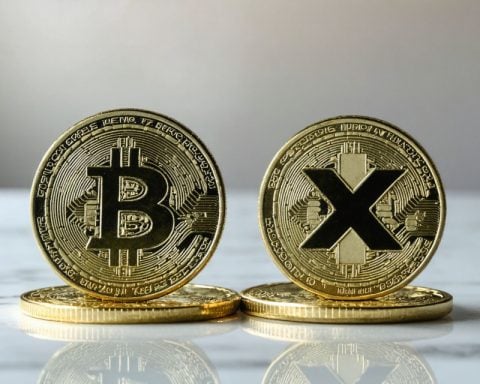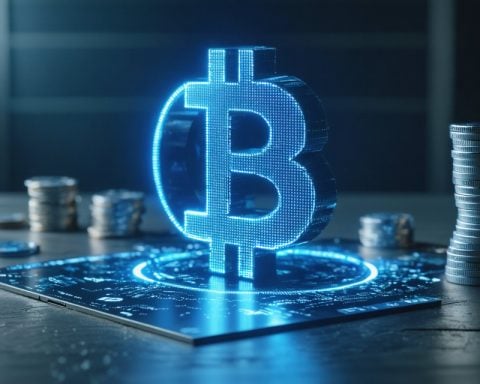The cryptocurrency world witnessed a storm brewing over the weekend of January 26, 2025. A seemingly casual tweet from Ripple’s CEO, Brad Garlinghouse, ignited a fierce debate among crypto enthusiasts.
While Garlinghouse’s tweet suggested a quiet weekend, the crypto market experienced a significant downturn, with XRP plummeting by over 10% in just 24 hours. This was the steepest decline since December 2024, following unfavorable announcements from the Federal Reserve that rattled both stock and crypto markets. Bitcoin wasn’t spared either, seeing a decline close to 7%.
Although some Bitcoin supporters blamed Garlinghouse for the market slump, there was no direct evidence linking his statement to the declines. The causes of the fallout were multifaceted. Rising tariffs proposed by political leaders created inflation fears, prompting traders to adopt a cautious stance. Adding fuel to the fire, the debut of a Chinese AI rival to ChatGPT stirred unrest in global markets. Notably, a substantial $800 million in liquidations exacerbated the price drops.
As XRP faced heightened scrutiny from Bitcoin advocates, longstanding tensions between the two factions resurfaced. Skepticism toward XRP’s centralized approach and Garlinghouse’s admission of needing to sell XRP led to criticisms from Bitcoin devotees, who argue for decentralization.
As rumors swirl about government collaborations and crypto reserve strategies, the ongoing rivalry promises to intensify, leaving investors wondering about the future of these digital assets.
Cryptocurrency’s Ripple Effect: Beyond Market Fluctuations
The recent turbulence in the cryptocurrency market, ignited by Ripple’s CEO Brad Garlinghouse’s tweet, raises essential questions about the broader implications for society and the global economy. As cryptocurrencies continue to gain traction as alternative financial instruments, their volatility becomes not just a concern for investors but a reflection of larger economic anxieties. The tethering of digital assets to traditional financial markers, such as inflation and political policies, underscores the fragility of this relatively nascent market.
The cultural ramifications are equally significant. The divide between Bitcoin and XRP proponents represents a microcosm of the larger ideological battles surrounding decentralization versus centralization in finance. As narratives around cryptocurrencies evolve, they influence public perception of digital assets, shaping how society engages with concepts such as ownership, value, and trust.
Moreover, the potential environmental impacts cannot be overlooked. With the rise and fall of cryptocurrencies often tied to energy-intensive mining operations, the situation poses questions regarding sustainability in the tech and finance sectors. As society grapples with climate change, the crypto industry faces increasing scrutiny over its energy consumption and carbon footprint.
In light of these issues, future trends point toward a more regulated environment, where clarity and accountability could reshape the relationship between crypto markets and broader financial systems. Long-term, the ongoing debates and market fluctuations may catalyze significant reforms, steering cryptocurrencies toward more sustainable practices and fostering a more informed investor class prepared to navigate this evolving landscape.
Ripple CEO’s Tweet Triggers XRP Market Chaos: What You Need to Know
In late January 2025, the cryptocurrency market experienced a tumultuous period largely attributed to a tweet from Ripple’s CEO, Brad Garlinghouse. While his message hinted at a tranquil weekend, it coincided with a dramatic decline in XRP’s value, plunging over 10% in just 24 hours. This drop marked the most significant downturn since December 2024, prompting a blend of confusion and speculation among crypto enthusiasts.
Overview of the Market Downturn
The cryptocurrency market saw widespread panic, not only affecting XRP but also severely impacting Bitcoin, which fell close to 7%. Analysts believe that the overarching reasons for this downturn were complex and multi-dimensional.
Key factors contributing to the market slump included:
1. Federal Reserve Announcements: Recent comments from the Fed sparked fears about inflation, leading traders to reassess their risk exposure and adopt a more cautious investment strategy.
2. Geopolitical Tensions: Proposed rising tariffs by political leaders stirred further anxieties regarding the global economy and its inflationary pressures.
3. Market Reactions to AI Developments: The entrance of a new Chinese AI competitor to ChatGPT unsettled global markets, leading many investors to flee toward safer assets.
4. Liquidations: A staggering $800 million in liquidations across various platforms exacerbated the decline, forcing many traders to close positions at unfavorable rates.
The Ripple and Bitcoin Rivalry
In the backdrop of this turmoil, longstanding tensions between XRP and Bitcoin advocates resurfaced. Bitcoin supporters have consistently criticized XRP for its perceived centralized nature, contrasting it with Bitcoin’s decentralized ethos. This incident further fueled the debate regarding the fundamental values and architectures of different cryptocurrencies.
Pros and Cons of XRP vs. Bitcoin:
| Feature | XRP | Bitcoin |
|——————|———————————————-|——————————————-|
| Centralization | More centralized, controlled by Ripple Labs | Decentralized and community-driven |
| Use Cases | Focus on cross-border payments | Store of value, digital currency |
| Speed | Faster transaction times (~3-5 seconds) | Slower transaction times (10+ minutes) |
| Adoption | High in financial institutions | Widely recognized as a digital gold |
Looking Ahead: Trends and Insights
The conversations surrounding XRP and Bitcoin are likely to grow in intensity. Market participants are now keenly observing government collaborations and potential crypto reserve strategies. As the industry evolves, the rivalry could lead to innovations and challenges that may reshape the landscape of digital assets.
Security and Sustainability Considerations
Moreover, as the cryptocurrency landscape continues to mature, stakeholders are increasingly focused on the security aspects of digital currencies and their environmental impact. With growing scrutiny on energy-intensive proof-of-work systems like Bitcoin, many are advocating for more sustainable alternatives, including proof-of-stake mechanisms used by XRP.
Predictions for the Future
As we move forward, market analysts predict that further fluctuations will emerge as regulatory frameworks start to solidify. Investors should remain vigilant, adapting strategies to account for both moving trends and underlying technological advancements in the crypto space.
Conclusion
The recent events surrounding Ripple and Bitcoin underscore the dynamic and sometimes unpredictable nature of the cryptocurrency market. In an environment driven by sentiment, technological advancements, and regulatory developments, staying informed is essential for navigating the complexities of digital assets.
For additional insights and updates on cryptocurrency trends, visit CoinDesk.













